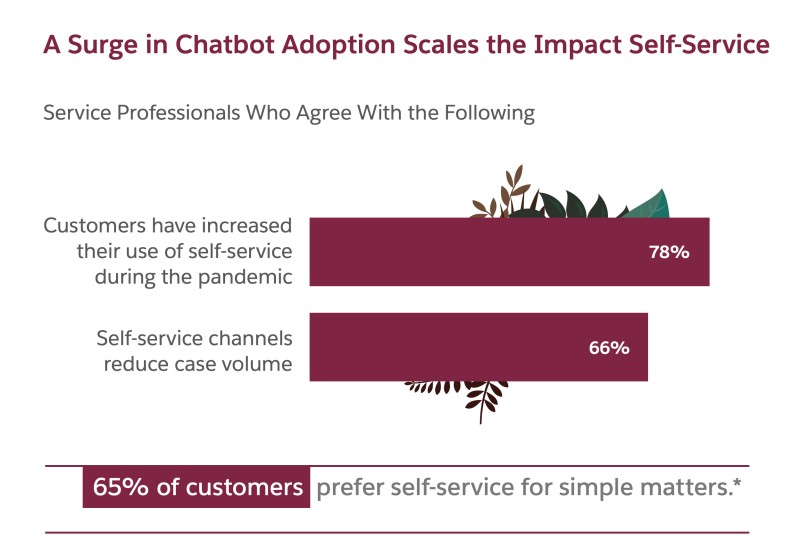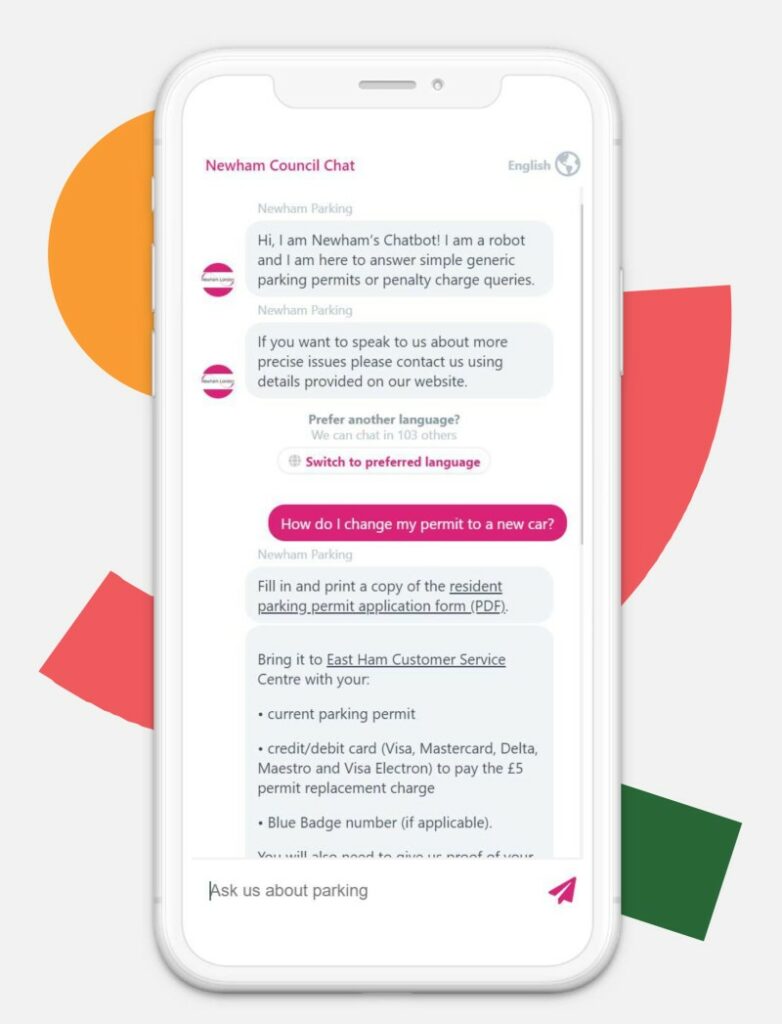You’ve decided to invest in a chatbot for your business — congratulations! But weeks later, you’re getting complaints from your customers. What gives? You may be guilty of these common chatbot mistakes.
Chatbots have come a long way over the years. They were once limited to rule-based algorithms when processing and answering questions (remember Microsoft Office’s not-very-helpful Clippy?). Today’s chatbots now leverage natural language processing (NLP), machine learning and conversational artificial intelligence (AI) to engage users.
It also helps that the average consumer is familiar with AI-powered virtual assistants/voice bots like Siri, Alexa and Google Home. These platforms all use natural-sounding language to answer questions and provide information about things like the weather, news, and your email, among other things.
These developments all contribute to the rise in chatbot adoption. According to Grand View Research, the global chatbot market size was estimated to be worth $430.9 million in 2020 and is expected to generate $2.49 billion in revenue by 2028.
Chatbots are also gaining wider consumer acceptance. A 2020 PSFK report shows that 74% of users prefer interacting with chatbots to look for “answers to simple questions.”
The challenge with deploying chatbots
This is exciting news for businesses and organisations looking to adopt chatbot technology to improve customer satisfaction and engagement. But it’s important to remember that not all chatbots are built equally.
Apart from working with the right chatbot provider for your needs, you also must consider how your chatbot is deployed and whether it contributes to a positive user experience (UX).
When done right, deploying chatbots can supercharge your customer service. But when things go wrong, it can alienate customers and damage your brand.
To help you avoid the latter, we’ve put together a list of common chatbot mistakes to avoid.
Chatbot mistake #1: Your messages are too long
Speed and convenience are arguably the most compelling factors driving customers to interact with chatbots. Research by Salesforce shows that 69% of consumers prefer chatbots for quick communication with brands.

This makes sense considering that, as a communication medium, chat lends itself to short and snappy messages. So, it makes sense for your chatbot to provide concise answers as often as possible.
The last thing customers want when engaging a chatbot is to go through a wall of text in your site’s chat window or social media channels — this completely defeats the purpose of having a bot. A good rule of thumb is to have individual chatbot messages take up no more than a third of the chat window.
Of course, some questions need length answers.
For example, information about COVID-19 can be challenging to condense in one-sentence messages. What you can do is narrow down user inquiries to give precise responses. If users want more information, you can signpost them to relevant internal or third-party resources.
Chatbot mistake #2: You don’t have self-serve options
According to the fourth edition of Salesforce’s State of Service report, nearly four in five customer service professionals said they saw an increase in self-service during the pandemic. The report also states that two-thirds of customers prefer self-service for simple tasks.

Self-service/self-serve is a user experience (UX) feature that allows customers to complete an action or task without any assistance from your customer service agents. The idea is to offer your services within the chat window, allowing customers to help themselves without speaking to your live agents.
Many organisations only use chatbots to provide answers to frequently asked questions (FAQS). But this only scratches the surface of what chatbots can do. With the proper integrations with your backend systems and tools, chatbots can help your customers:
- Track something;
- Order something;
- Change something and;
- Report something, all without leaving the chat.
Bottom line? Use chatbots to deliver useful self-service features instead of just answers to FAQs.
Chatbot mistake #3: You don’t have a chatbot strategy
It can be easy to fall into the trap of paying a chatbot provider to deploy a chatbot on your site and calling it a day. But this lax approach often leads to missed opportunities and a poorly optimised chat experience.
Before deploying a chatbot, we recommend first formulating a strategy to identify your purpose and goals. For example, you could implement a chatbot to reduce long wait times and handle the surge of queries during peak periods (e.g. Boxing Day), which helps maintain high levels of customer service.
Here’s how this approach looks in action.
We worked with Newham Council to deploy our live chat and chatbot platform across their channels and help the council deal with queries about parking in the borough. We also wanted to help give the council’s call centre the bandwidth to focus on more complex conversations about the area’s parking guidelines.
Rather than wait several minutes to speak to a live agent, residents in Newham used our self-service features to get instant answers to frequently asked questions about parking.

In just six months, Newham Council was able to:
- Answer 10,491 questions automatically
- Save 84 hours in call time
- Generate £40,000 in savings.
Chatbot mistake #4: You don’t have a clear escalation process
One of the more frequent criticisms of chatbots is that they can frustrate customers who want to ask complex questions and require urgent feedback from a human being.
A 2018 report by Forrester Research found that chatbots were held back by “poor escalation paths to agents.” Forrester noted that chatbots, despite being heavily marketed as replacements to human agents, are far from the contact-centre saviours they are touted to be.
What chatbots are good at is providing answers to customers’ FAQs, most of which revolve around the same set of topics, such as:
- “What time do you open?”
- “Where is my order?”
- “Do you accept (insert payment method)?”
- “Can I book a (insert service)?”
However, your customers will inevitably have questions about more complex topics that your bots can’t handle. Or they may have questions that need your urgent attention — a common occurrence in critical services like healthcare and energy services.
In cases like these, you need a proper escalation path — one that shouldn’t leave customers waiting for several minutes. Be sure to give your bots the ability to speak to an agent at any time and set expectations for live customer support availability.
If your contact centre is only open during business hours, offer to take their details and create a ticket that lets your customer jump straight to a fully-briefed agent.
Chatbot mistake #5. You’re not using your chat data to improve your chatbots
Chatbots are rarely perfect from the get-go. Some bots are “smarter” than others and understand the context of keywords, while others take more time to pick up on nuances in conversations. This can often result in chatbots giving the wrong information to customers.
The key to fixing this problem is to test and improve your chatbots. And to do this, you need data. Fortunately, some chatbot providers offer a backend analytics platform that lets you conduct sentiment analysis.
Sentiment analysis is a field under computer science that uses machine learning and NLP to understand the tone, intent and context of a text-based message or spoken language. It also plays a vital role in getting an overview of your customers’ overall mood based on common queries and the type of words they frequently use.
You can use this information to help your bot understand the context of words and connect them to emotions like:
- Joy
- Satisfaction
- Frustration
- Anger
- Impatience
- Reluctance
So, the next time your chatbot detects words like “now” or “I want my money back”, it can sense the importance of the query, provide the proper response and escalate the conversation to a live agent if necessary.
It’s up to you to make your chatbots great
Much of the hype around chatbots can make them sound like a silver bullet for customer engagement. But a successful chatbot requires work. Take note of these common chatbot mistakes to avoid the pitfalls of using AI and give your bots a much-needed human touch.
Be sure to read the Futr blog for more insights on chatbots and using AI for customer service. You can also get in touch with the Futr team and schedule a demo of our chatbot and live chat solutions.

